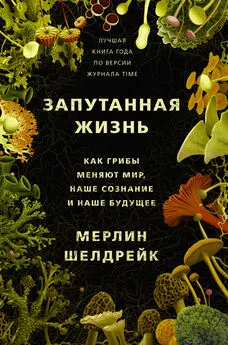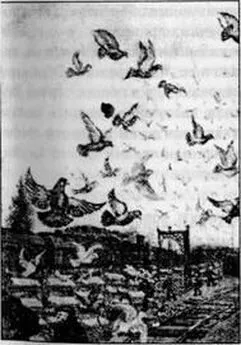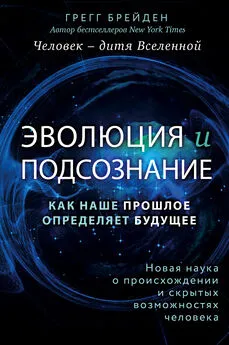Мерлин Шелдрейк - Запутанная жизнь. Как грибы меняют мир, наше сознание и наше будущее
- Название:Запутанная жизнь. Как грибы меняют мир, наше сознание и наше будущее
- Автор:
- Жанр:
- Издательство:Литагент АСТ
- Год:2021
- Город:Москва
- ISBN:978-5-17-122572-8
- Рейтинг:
- Избранное:Добавить в избранное
-
Отзывы:
-
Ваша оценка:
Мерлин Шелдрейк - Запутанная жизнь. Как грибы меняют мир, наше сознание и наше будущее краткое содержание
Талантливый молодой биолог Мерлин Шелдрейк переворачивает мир с ног на голову: он приглашает читателя взглянуть на него с позиции дрожжей, псилоцибиновых грибов, грибов-паразитов и паутины мицелия, которая простирается на многие километры под поверхностью земли (что делает грибы самыми большими живыми организмами на планете). Открывающаяся грибная сущность заставляет пересмотреть наши взгляды на индивидуальность и разум, ведь грибы, как выясняется, – повелители метаболизма, создатели почв и ключевые игроки во множестве естественных процессов. Они способны изменять наше сознание, врачевать тела и даже обратить нависшую над нами экологическую катастрофу. Эти организмы переворачивают наше понимание самой жизни на Земле.
В формате PDF A4 сохранен издательский макет.
Запутанная жизнь. Как грибы меняют мир, наше сознание и наше будущее - читать онлайн бесплатно ознакомительный отрывок
Интервал:
Закладка:
Barto KE, Hilker M, Müller F, Mohney BK, Weidenhamer JD, Rillig MC. 2011. The fungal fast lane: common mycorrhizal networks extend bioactive zones of allelochemicals in soils. PLOS ONE 6: e27195.
Barto KE, Weidenhamer JD, Cipollini D, Rillig MC. 2012. Fungal superhighways: do common mycorrhizal networks enhance below ground communication? Trends in Plant Science 17: 633–37.
Bascompte J. 2009. Mutualistic networks. Frontiers in Ecology and the Environment 7: 429–36.
Baslam M, Garmendia I, Goicoechea N. 2011. Arbuscular mycorrhizal fungi (AMF) improved growth and nutritional quality of greenhouse-grown lettuce. Journal of Agricultural and Food Chemistry 59: 5504–515.
Bass D, Howe A, Brown N, Barton H, Demidova M, Michelle H, Li L, Sanders H, Watkinson SC, Willcock S, et al. 2007. Yeast forms dominate fungal diversity in the deep oceans. Proceedings of the Royal Society B 274: 3069–77.
Bassett DS, Sporns O. 2017. Network neuroscience. Nature Neuroscience 20: 353–64.
Bassett E, Keith MS, Armelagos G, Martin D, Villanueva A. 1980. Tetracycline-labeled human bone from ancient Sudanese Nubia (A.D. 350). Science 209: 1532–534.
Bateson B. 1928. William Bateson, Naturalist . Cambridge, UK: Cambridge University Press.
Bateson G. 1987. Steps to an Ecology of Mind . Northvale, NJ: Jason Aronson Inc.
Bebber DP, Hynes J, Darrah PR, Boddy L, Fricker MD. 2007. Biological solutions to transport network design. Proceedings of the Royal Society B 274: 2307–315.
Beck A, Divakar P, Zhang N, Molina M, Struwe L. 2015. Evidence of ancient horizontal gene transfer between fungi and the terrestrial alga Trebouxia. Organisms Diversity & Evolution 15: 235–48.
Beerling D. 2019. Making Eden . Oxford, UK: Oxford University Press.
Beiler KJ, Durall DM, Simard SW, Maxwell SA, Kretzer AM. 2009. Architecture of the wood-wide web: Rhizopogon spp. genets link multiple Douglas-fir cohorts. New Phytologist 185: 543–53.
Beiler KJ, Simard SW, Durall DM. 2015. Topology of tree-mycorrhizal fungus interaction networks in xeric and mesic Douglas-fir forests. Journal of Ecology 103: 616–28.
Bengtson S, Rasmussen B, Ivarsson M, Muhling J, Broman C, Marone F, Stampanoni M, Bekker A. 2017. Fungus-like mycelial fossils in 2.4-billion-year-old vesicular basalt. Nature Ecology & Evolution 1: 0141.
Bennett JA, Cahill JF. 2016. Fungal effects on plant – plant interactions contribute to grassland plant abundances: evidence from the field. Journal of Ecology 104: 755–64.
Bennett JA, Maherali H, Reinhart KO, Lekberg Y, Hart MM, Klironomos J. 2017. Plant-soil feedbacks and mycorrhizal type influence temperate forest population dynamics. Science 355: 181–84.
Bennett JW, Chung KT. 2001. Alexander Fleming and the discovery of penicillin. Advances in Applied Microbiology 49: 163–84.
Berendsen RL, Pieterse CM, Bakker PA. 2012. The rhizosphere microbiome and plant health. Trends in Plant Science 17: 478–86.
Bergson H. 1911. Creative Evolution . New York, NY: Henry Holt and Company.
Berthold T, Centler F, Hübschmann T, Remer R, Thullner M, Harms H, Wick LY. 2016. Mycelia as a focal point for horizontal gene transfer among soil bacteria. Scientific Reports 6: 36390.
Bever JD, Richardson SC, Lawrence BM, Holmes J, Watson M. 2009. Preferential allocation to beneficial symbiont with spatial structure maintains mycorrhizal mutualism. Ecology Letters 12: 13–21.
Bingham MA, Simard SW. 2011. Mycorrhizal networks affect ectomycorrhizal fungal community similarity between conspecific trees and seedlings. Mycorrhiza 22: 317–26.
Björkman E. 1960. Monotropa Hypopitys L. – an Epiparasite on Tree Roots. Physiologia Plantarum 13: 308–27.
Boddy L, Hynes J, Bebber DP, Fricker MD. 2009. Saprotrophic cord systems: dispersal mechanisms in space and time. Mycoscience 50: 9–19.
Bonfante P. 2018. The future has roots in the past: the ideas and scientists that shaped mycorrhizal research. New Phytologist 220: 982–95.
Bonfante P, Desirò A. 2017. Who lives in a fungus? The diversity, origins and functions of fungal endobacteria living in Mucoromycota. The ISME Journal 11: 1727–735.
Bonfante P, Selosse M-A. 2010. A glimpse into the past of land plants and of their mycorrhizal affairs: from fossils to evo-devo. New Phytologist 186: 267–70.
Bonifaci V, Mehlhorn K, Varma G. 2012. Physarum can compute shortest paths. Journal of Theoretical Biology 309: 121–33.
Booth MG. 2004. Mycorrhizal networks mediate overstorey-understorey competition in a temperate forest. Ecology Letters 7: 538–46.
Bordenstein SR, Theis KR. 2015. Host biology in light of the microbiome: ten principles of holobionts and hologenomes. PLOS Biology 13: e1002226.
Bouchard F. 2018. “Symbiosis, Transient Biological Individuality, and Evolutionary Process.” In Everything Flows: Towards a Processual Philosophy of Biology . Dupré J, Nicholson J, eds. Oxford, UK: Oxford University Press, pp. 186–98.
Boulter M. 2010. Darwin’s Garden: Down House and the Origin of Species . Berkeley, CA: Counterpoint.
Boyce GR, Gluck-Thaler E, Slot JC, Stajich JE, Davis WJ, James TY, Cooley JR, Panaccione DG, Eilenberg J, Licht HH, et al. 2019. Psychoactive plant– and mushroom-associated alkaloids from two behavior modifying cicada pathogens. Fungal Ecology 41: 147–64.
Brand A, Gow NA. 2009. Mechanisms of hypha orientation of fungi. Current Opinion in Microbiology 12: 350–57.
Brandt A, de Vera JP, Onofri S, Ott S. 2014. Viability of the lichen Xanthoria elegans and its symbionts after 18 months of space exposure and simulated Mars conditions on the ISS. International Journal of Astrobiology 14: 411–25.
Brandt A, Meeßen J, Jänicke RU, Raguse M, Ott S. 2017. Simulated space radiation: impact of four different types of high-dose ionizing radiation on the lichen Xanthoria elegans. Astrobiology 17: 136–44.
Bringhurst R. 2009. Everywhere Being Is Dancing . Berkeley, CA: Counterpoint.
Brito I, Goss MJ, Alho L, Brígido C, van Tuinen D, Félix MR, Carvalho M. 2018. Agronomic management of AMF functional diversity to overcome biotic and abiotic stresses – the role of plant sequence and intact extraradical mycelium. Fungal Ecology 40: 72–81.
Bruce-Keller AJ, Salbaum MJ, Berthoud H-R. 2018. Harnessing gut microbes for mental health: getting from here to there. Biological Psychiatry 83: 214–23.
Bruggeman FJ, van Heeswijk WC, Boogerd FC, Westerhoff HV. 2000. Macromolecular Intelligence in Microorganisms. Biological Chemistry 381: 965–72.
Brundrett MC. 2002. Coevolution of roots and mycorrhizas of land plants. New Phytologist 154: 275–304.
Brundrett MC, Tedersoo L. 2018. Evolutionary history of mycorrhizal symbioses and global host plant diversity. New Phytologist 220: 1108–115.
Brunet T, Arendt D. 2015. From damage response to action potentials: early evolution of neural and contractile modules in stem eukaryotes. Philosophical Transactions of the Royal Society B 371: 20150043.
Brunner I, Fischer M, Rüthi J, Stierli B, Frey B. 2018. Ability of fungi isolated from plastic debris floating in the shoreline of a lake to degrade plastics. PLOS ONE 13: e0202047.
Bublitz DC, Chadwick GL, Magyar JS, Sandoz KM, Brooks DM, Mesnage S, Ladinsky MS, Garber AI, Bjorkman PJ, Orphan VJ, et al. 2019. Peptidoglycan Production by an Insect-Bacterial Mosaic. Cell 179: 1–10.
Buddie AG, Bridge PD, Kelley J, Ryan MJ. 2011. Candida keroseneae sp. nov., a novel contaminant of aviation kerosene. Letters in Applied Microbiology 52: 70–75.
Büdel B, Vivas M, Lange OL. 2013. Lichen species dominance and the resulting photosynthetic behavior of Sonoran Desert soil crust types (Baja California, Mexico). Ecological Processes 2: 6.
Buhner SH. 1998. Sacred Herbal and Healing Beers . Boulder, CO: Siris Books.
Buller, AHR. 1931. Researches on Fungi, vol. 4. London, UK: Longmans, Green, and Co.
Büntgen U, Egli S, Schneider L, von Arx G, Rigling A, Camarero JJ, Sangüesa-Barreda G, Fischer CR, Oliach D, Bonet JA, et al. 2015. Long-term irrigation effects on Spanish holm oak growth and its black truffle symbiont. Agriculture, Ecosystems & Environment 202: 148–59.
Burford EP, Kierans M, Gadd GM. 2003. Geomycology: fungi in mineral substrata. Mycologist 17: 98–107.
Burkett W. 1987. Ancient Mystery Cults . Cambride, MA: Harvard University Press.
Burr C. 2012. The Emperor of Scent . New York, NY: Random House.
Bushdid C, Magnasco M, Vosshall L, Keller A. 2014. Humans can discriminate more than 1 trillion olfactory stimuli. Science 343: 1370–372.
Cai Q, Qiao L, Wang M, He B, Lin F-M, Palmquist J, Huang S-D, Jin H. 2018. Plants send small RNAs in extracellular vesicles to fungal pathogen to silence virulence genes. Science 360: 1126–129.
Calvo Garzón P, Keijzer F. 2011. Plants: Adaptive behavior, root-brains, and minimal cognition. Adaptive Behavior 19: 155–71.
Campbell B, Ionescu R, Favors Z, Ozkan CS, Ozkan M. 2015. Bio-derived, binderless, hierarchically porous carbon anodes for Li-ion batteries. Scientific Reports 5: 14575.
Caporael L. 1976. Ergotism: the satan loosed in Salem? Science 192: 21–26.
Carhart-Harris RL, Bolstridge M, Rucker J, Day CM, Erritzoe D, Kaelen M, Bloomfield M, Rickard JA, Forbes B, Feilding A, et al. 2016a. Psilocybin with psychological support for treatment-resistant depression: an open-label feasibility study. The Lancet Psychiatry 3: 619–27.
Carhart-Harris RL, Erritzoe D, Williams T, Stone J, Reed LJ, Colasanti A, Tyacke RJ, Leech R, Malizia AL, Murphy K, et al. 2012. Neural correlates of the psychedelic state as determined by fMRI studies with psilocybin. Proceedings of the National Academy of Sciences 109: 2138–143.
Carhart-Harris RL, Muthukumaraswamy S, Roseman L, Kaelen M, Droog W, Murphy K, Tagliazucchi E, Schenberg EE, Nest T, Orban C, et al. 2016b. Neural correlates of the LSD experience revealed by multimodal neuroimaging. Proceedings of the National Academy of Sciences 113: 4853–858.
Carrigan MA, Uryasev O, Frye CB, Eckman BL, Myers CR, Hurley TD, Benner SA. 2015. Hominids adapted to metabolize ethanol long before human-directed fermentation. Proceedings of the National Academy of Sciences 112: 458–63.
Casadevall A. 2012. Fungi and the rise of mammals. Pathogens 8: e1002808.
Casadevall A, Cordero RJ, Bryan R, Nosanchuk J, Dadachova E. 2017. Melanin, Radiation, and Energy Transduction in Fungi. Microbiology Spectrum 5: FUNK-0037-2016.
Casadevall A, Kontoyiannis DP, Robert V. 2019. On the Emergence of Candida auris : Climate Change, Azoles, Swamps, and Birds. mBio 10: e01397-19.
Ceccarelli N, Curadi M, Martelloni L, Sbrana C, Picciarelli P, Giovannetti M. 2010. Mycorrhizal colonization impacts on phenolic content and antioxidant properties of artichoke leaves and flower heads two years after field transplant. Plant and Soil 335: 311–23.
Cepelewicz J. 2019. Bacterial Complexity Revises Ideas About “Which Came First?” Quanta : www.quantamagazine.org/bacterial-organelles-revise-ideas-about-which-came-first-20190612/ [accessed October 29, 2019].
Читать дальшеИнтервал:
Закладка:









